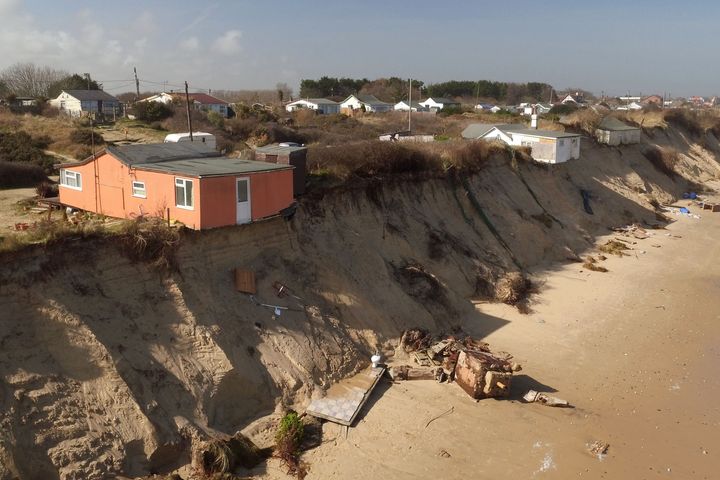
As many as 1.5 million properties in England will be in areas at significant risk of coastal flooding by the 2080s as sea levels rise, the government’s climate advisers have warned.
Some 1.2 million homes will be among the buildings at risk of coastal flooding, while 100,000 properties will be threatened by eroding coastlines, a report from the Committee on Climate Change (CCC) said.
Hundreds of miles of major roads and railway lines, 92 railway stations and even 55 historic landfill sites will be at risk of coastal flooding or erosion by 2100 – raising the risk of old rubbish tips collapsing onto beaches.
Already 520,000 properties are at risk from coastal flooding and 8,900 from erosion.
And places such as Dawlish in Devon, and Hemsby and Happisburgh in Norfolk are already being hit by floods, coastal storms and erosion.
The committee issued a stark warning that sea levels could rise by up to a metre (3ft) within the lifetime of children born today, and it would not be possible to protect the whole English coastline as it is now. But coastal communities were particularly vulnerable to crises because they tended to be older and less well-off on average than other places.
Members of the public were not being properly informed about the risks of coastal erosion and flooding that they were exposed to and how that would change in the future, the committee warned.
A couple selling up and retiring to the coast could be cash buyers of a property “with a fabulous sea view”, without being given any information about whether it was at risk of coastal erosion.
Professor Jim Hall, from the University of Oxford and member of the adaptation committee, said that information should be made available – though it could hit house prices.
And he said current plans to protect around 90 miles of the coastline around England would not be affordable to implement, while around 900 miles may not secure money for defences under current government funding priorities.
Baroness Brown, chairwoman of the CCC’s adaptation committee, said: “This is a wake-up call to the fact we can’t protect the whole English coast to today’s standards.
“Quite understandably most people living on the coast will assume that’s exactly what will happen, that it will remain protected.
“We want to stimulate some honest conversation with coastal communities and affected places about the difficult choices which lie ahead.”
Implementing current policies to protect England’s coasts would cost £18 to £30bn, and long-term “shoreline management plans” which were meant to cover efforts to manage the coast were not legally binding and were unfunded.
Prof Hall said it would not be possible to simply “hold the line” to defend the things people treasured on the coast, such as walking and playing with their children on the beach.
“It’s much better to think about how can we restore the environment that people treasure, beaches, dunes, mud flats, salt marshes, eroding cliffs which deposit fossils from which our children learn, and at the same time think about how we can make coastal communities better places,” he said.
The committee called on the government and local authorities to engage properly with people about the future, which would take time and money.
It said ministers must make funding and investment available to protect cities, restore coastal habitats and help affected communities cope with the inevitable changes, which may include moving from where they currently are.
Ministers should also look at introducing an insurance scheme to protect properties facing erosion similar to the Flood Re programme for homes at risk of flooding, Baroness Brown added.
A government spokesman said: “The environment secretary has been very clear – we will take the action required to ensure our country is resilient and prepared for the challenges the changing climate brings.
“The government has already committed £1.2bn of investment in coastal erosion and sea flooding projects over the next six years to better protect 170,000 homes.
“We welcome the committee’s report which will inform our work to tackle increasing flood and coastal erosion risks, ahead of the publication of our Government Policy Statement on flooding and coastal erosion next year.”